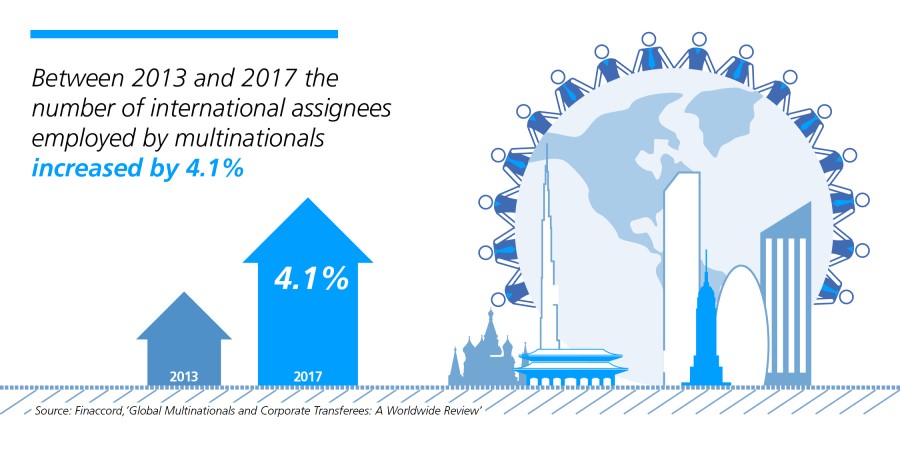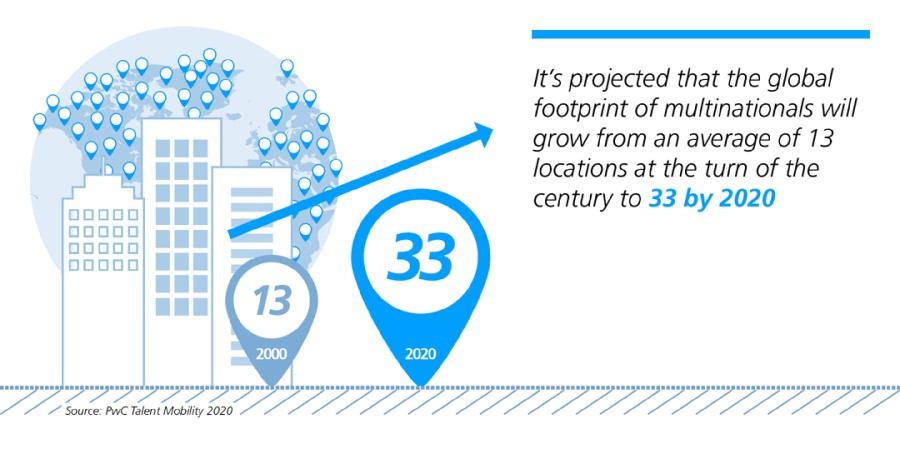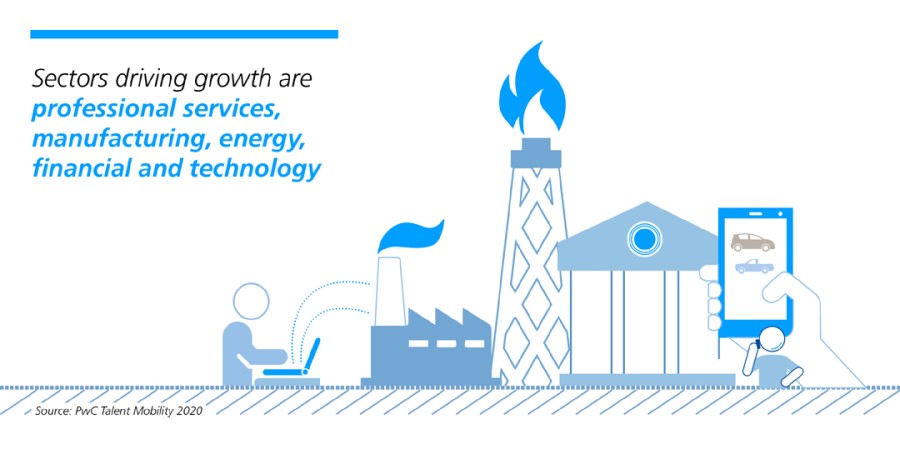Global expansion: A global view of international assignees

Multinationals, especially those based in Europe, Asia-Pacific and North America, are continuing to expand as they seek to achieve competitive advantage, diversify and gain access to new talent. As a result, many multinational companies operate in more than 100 countries and often generate over 80% of their revenues from non-domestic markets.
This geographical expansion is increasing international mobility, boosting the number of corporate transferees employed by multinationals to around 840,000 in 2017 – an increase of 4.1% since 2013. While this number isn’t huge, this group of typically more senior and highly paid employees is one that has a very high focus for company benefits managers.

It’s also a market that’s growing fast. Using forecasts from the International Monetary Fund and United Nationals Conference on Trade and Development, Finaccord calculates that the number of multinational enterprises worldwide is likely to increase by 3.2% by 2021, from 12,230 in 2017 to around 13,895, reflecting expectations of generally increasing GDP at a worldwide level.
At the same time, PwC estimates that the global footprint of multinational organisations will grow from an average of 13 locations at the turn of the century to a projected 33 by 2020. This expected growth in the number of multinationals when combined with an expanding geographic footprint supports expectations that the number of international assignees will also increase rapidly – reaching 1.01 million by 2021.

Professional services and manufacturing sectors lead the way in terms of producing the most corporate transferees, followed by the energy, financial and technology sectors. As you would expect, the largest multinational companies have the highest number of expatriate employees, with a typical organisation employing more than 500 corporate transferees. Around 317,000 of the 840,000 corporate transferees worldwide are employed by the largest European based multinationals, although it is likely that the number of corporate assignees employed by multinationals in the Asia-Pacific region will have overtaken those of Europe by 2021, reflecting the faster pace of growth of multinationals in Asia compared with Europe.

The increase in global mobility has presented new challenges for the HR function as they tackle the complexities of moving more internationally mobile employees to an increasingly diverse range of countries.
Look out for our next article, where we will explore how this expansion is affecting international workforces and the benefits package they receive.
This article is provided by Zurich.
In partnership with Zurich
We are one of the world's leading insurers and one of the few to operate on a truly global basis.







